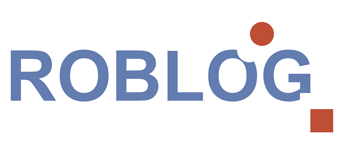Generalized Simultaneous Localization and Mapping (SLAM) on Graphs with Multimodal Probabilities and Hyperedges
- Links
- Metadata at Jacobs University.
- View PDF Open Access
Abstract
Simultaneous Localization and Mapping (SLAM) is one of the cornerstones of robotics research. Any mobile robot which is to operate in a previously unknown area requires a method for estimating both a model of its new surrounding and its location within it. Even stationary robots that may have to process previously unknown objects require a method to model these objects as they are detected. SLAM methods offer solutions for these situations, utilizing varying sensors, robot models, and estimation techniques. This thesis focuses on Graph-based SLAM methods, where sensor observations are related with spatial constraints in a network fashion. Numerical optimization methods are used to estimate the most likely global configuration of observations, which, when merged, represents the model of the environment or object in question. However, the original graph topology and sensor observations are kept intact and are reusable for further mapping operations.
The thesis consists of two main parts. First, several contributions to traditional Graph-based SLAM research are discussed. Novel uncertainty estimation techniques for 2D and 3D spectral registration methods are described that allow the use of such methods in Graph-based SLAM. Spectral registration methods are especially robust to noise and their computational requirements only depend on the resolution of the data, not its structure. Additionally, novel approaches to multi-robot Graph-based SLAM under communication constraints are described, including a formal description of the underlying graph structure and techniques to optimize the use of available bandwidth.
Second, novel contributions in the very exciting field of robust optimization techniques for Graph-based SLAM are shown and collected in the description of the Generalized Graph SLAM framework. Specifically, the two major sources of errors in traditional Graph-based SLAM are addressed: Multiple local optima in the registration cost function (local ambiguity) that can impact the performance of traditional methods severely are represented in the Generalized Graph SLAM framework as multimodal probability distributions within the spatial constraints. The second major source of errors lies in place recognition methods, which is needed to improve the map by relating current sensor observations to much older ones. Significant work has been done to eliminate false positives, usually at the cost of false negatives. When a repetitive environment gives rise to multiple independent places in the map that fit the current sensor observation (global ambiguity), traditional methods would either disregard such ambiguous results if they can be detected or fatally diverge. In order to take full advantage of even such globally ambiguous cases, they are represented as hyperedges in the Generalized Graph SLAM framework. Multiple estimation methods are described that are applicable to these extended graph structures. Additionally, a method to generate multimodal registration results is presented.
All contributions are further substantiated with extensive experimental results, both using synthetic and real world data sets. Synthetic data sets are used for systematic analysis of the involved parameters and comparison with ground truth. Results on real world data sets show the applicability and effectiveness of the respective methods in realistic scenarios.
Bibtex:
@phdthesis{Pfingsthorn2014phd,
author = {Max Pfingsthorn},
title = {{Generalized Simultaneous Localization and Mapping (SLAM) on Graphs with Multimodal Probabilities and Hyperedges}},
school = {{Jacobs University Bremen}},
address = {{Campus Ring 1, 28759 Bremen, Germany}}
url = {http://urn-resolving.de/urn:nbn:de:gbv:579-opus-1003924},
year = {2014},
month = {March}
}

